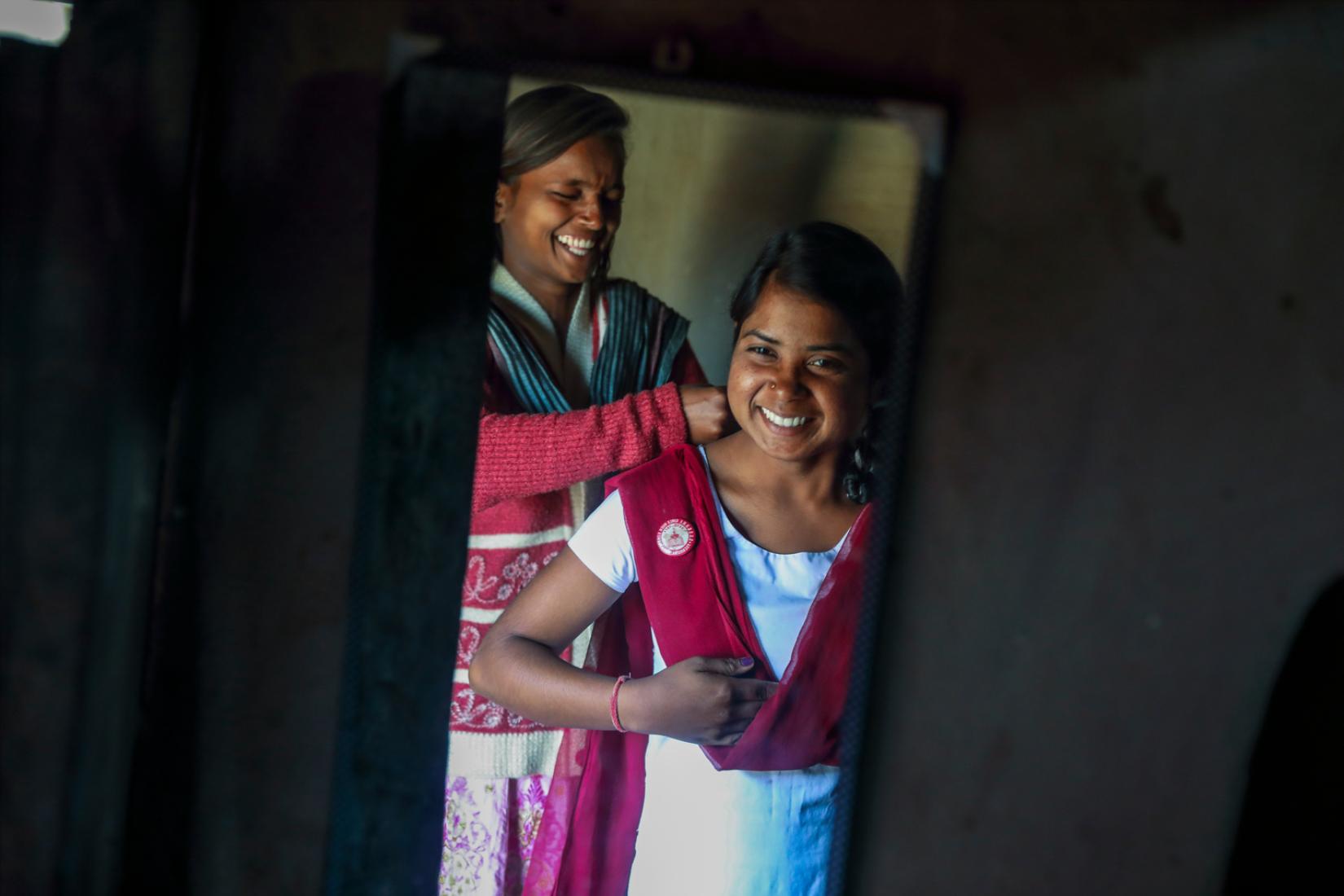25 million child marriages prevented in last decade due to accelerated progress, according to new UNICEF estimates
06 March 2018
Improving trend in child marriage driven largely by significant reductions in South Asia, but problem persists with over 150 million girls likely to marry by…

Improving trend in child marriage driven largely by significant reductions in South Asia, but problem persists with over 150 million girls likely to marry by 2030
NEW YORK, 6 March 2018 – The prevalence of child marriage is decreasing globally with several countries seeing significant reductions in recent years, UNICEF said today. Overall, the proportion of women who were married as children decreased by 15 per cent in the last decade, from 1 in 4 to approximately 1 in 5.
South Asia has witnessed the largest decline in child marriage worldwide in the last 10 years, as a girl’s risk of marrying before her 18th birthday has dropped by more than a third, from nearly 50 per cent to 30 per cent, in large part due to progress in India. Increasing rates of girls’ education, proactive government investments in adolescent girls, and strong public messaging around the illegality of child marriage and the harm it causes are among the reasons for the shift.
“When a girl is forced to marry as a child, she faces immediate and lifelong consequences. Her odds of finishing school decrease while her odds of being abused by her husband and suffering complications during pregnancy increase. There are also huge societal consequences, and higher risk of intergenerational cycles of poverty,” said Anju Malhotra, UNICEF’s Principal Gender Advisor. “Given the life-altering impact child marriage has on a young girl’s life, any reduction is welcome news, but we’ve got a long way to go.”
According to new data from UNICEF, the total number of girls married in childhood is now estimated at 12 million a year. The new figures point to an accumulated global reduction of 25 million fewer marriages than would have been anticipated under global levels 10 years ago. However, to end the practice by 2030 – the target set out in the Sustainable Development Goals – progress must be significantly accelerated. Without further acceleration, more than 150 million additional girls will marry before their 18th birthday by 2030.
Worldwide, an estimated 650 million women alive today were married as children. While South Asia has led the way on reducing child marriage over the last decade, the global burden of child marriage is shifting to sub-Saharan Africa, where rates of progress need to be scaled up dramatically to offset population growth. Of the most recently married child brides, close to 1 in 3 are now in sub-Saharan Africa, compared to 1 in 5 a decade ago.
New data also point to the possibility of progress on the African continent. In Ethiopia – once among the top five countries for child marriage in sub-Saharan Africa – the prevalence has dropped by a third in the last 10 years.
“Each and every child marriage prevented gives another girl the chance to fulfill her potential,” said Malhotra. “But given the world has pledged to end child marriage by 2030, we’re going to have to collectively redouble efforts to prevent millions of girls from having their childhoods stolen through this devastating practice.”
Background
Despite the overall decline in India, national and state averages mask realities at the district level as a few districts continue to have high rates of child marriage. For example, the states with the highest prevalence of child marriage are Bihar, West Bengal and Rajasthan with close to 40 percent prevalence. While Tamil Nadu and Kerala have prevalence below 20 percent, they have pockets of disparity concentrated in tribal communities and amongst particular castes including scheduled castes[1].
UNICEF and UNFPA have joined forces through a Global Programme to Accelerate Action to End Child Marriage, wherein existing strategies in areas such as health, education, child protection, nutrition and water and sanitation have been brought together to address child marriage in a holistic manner. The approach is to address child marriage through the entire lifecycle of a child especially by addressing persisting negative social norms which are key drivers for the high prevalence of child marriage in India.
Accelerated action to end child marriage requires context-specific strategies which need to be supported by latest data on prevalence and trends. India is now seeing a transitional period, with the prevalence of child marriage declining from 47 percent girls married before age 18, in 2005-2006 to 27 percent in 2015-2016. While the change is similar with all states showing a declining trend, the prevalence of child marriage continues to be high in some districts. The focus is on geographies that have high (>50 percent) and medium (between 20 per cent-50 percent) prevalence of child marriage.
The two UN agencies in partnership with Civil Society Organizations, in support of the Government of India, will place specific focus on reaching the most vulnerable girls, often left behind, by generating better opportunities and informed choices for them, linked to education, skills and employability.
About UNICEF
UNICEF works in some of the world’s toughest places, to reach the world’s most disadvantaged children. To save their lives. To defend their rights. To help them fulfil their potential. Across 190 countries and territories, we work for every child, everywhere, every day, to build a better world for everyone. And we never give up.
For more information about UNICEF and its work for children, visit www.unicef.org
Follow UNICEF on Twitter and Facebook
Source: National Family Health Survey 4

















